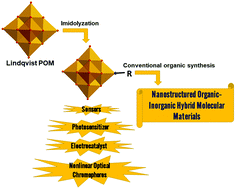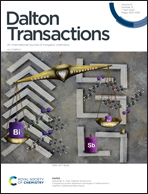Insights into organic–inorganic hybrid molecular materials: organoimido functionalized polyoxomolybdates
Abstract
Polyoxometalates (POMs) are polyatomic anions that comprise transition metal group 5 (V, Nb, Ta) or group 6 (Mo, W) oxyanions connected together by shared oxygen atoms. POMs are fascinating because of their exclusive and remarkable characteristics. One of the most interesting features of POMs is their capability to function as an electron relay by performing stepwise multi-electron redox reactions while maintaining their structural integrity. Functionalization of POMs with amino organic compounds results in organoimido derivatives of polyoxometalates, which have aroused interest due to augmentation of their properties. Comprehensive study has shown that the synthesis methodologies to obtain desired organoimido derivatives of POMs by employing various imido-releasing reagents have progressed drastically in recent decades, particularly the innovative DCC-dehydrating technique. These organoimido functionalized POMs have been used as major building blocks to develop unique nanostructured organic–inorganic hybrid molecular materials. Many conventional organic synthesis processes such as Pd-catalyzed carbon–carbon coupling and esterification reactions have been performed with organoimido functionalized POMs where the presence of POM triggered the reaction process. Thus, investigation of the reactivity of organoimido derivatives of POMs foreshadows the intriguing future of POMs chemistry.

- This article is part of the themed collection: 2022 Frontier and Perspective articles


 Please wait while we load your content...
Please wait while we load your content...